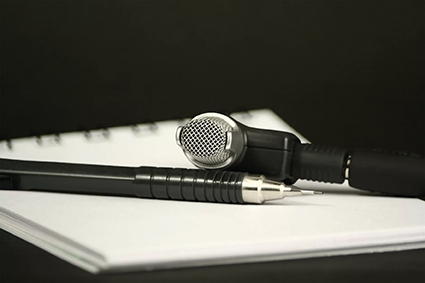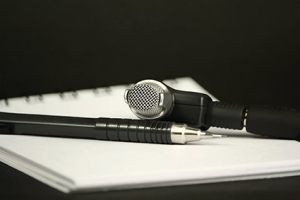First Ever Interview is of Georgian Origin
The historians of literature and journalism would persist in establishing that interview, as a journalistic genre, irrevocably belongs to the series of purely American efforts to make the world a better-described place to live. Wrong! The interview is not an American discovery. It is a Georgian invention. To wit, I mean not the state of Georgia, but the country of Georgia. Incidentally, I got this information from the helpful and famous Wikipedia, which literally says: ‘The first known interview that fits the matrix of interview-as-genre has been claimed to be the 1756 interview by Archbishop Timote (Timothy) Gabashvili (1704-1764), prominent Georgian religious figure, diplomat, writer and traveler, who interviewed Eugenios Voulgaris (1716-1806), renowned Greek theologian, Rector of the Orthodox School of Mount Athos’.
Moreover, among the references of the Wiki item, there is an article, titled ‘For the Genesis of Interview as a Genre’ by well-known Georgian scholar and pedagogue, Professor Paata Natsvlishvili, published in the December 2013 issue of the ‘European Scientific Journal’. According to the article, the word ‘interview’ was first introduced in 1867. It was exactly then that it came around both as a journalistic term as well as a method of journalistic writing. The first known samples of ‘interview’ as a way to disseminate information with the help of means of mass communication date back to the 1830s – not earlier than that! Therefore, the discovery of samples of written discourse, included in one of the readily available ancient Georgian texts, is worthy of serious scholarly study because they comply totally with the criteria of a journalistic interview matrix.
In the mid-18th century, Timote Gabashvili created a travel essay, calling it ‘Mimoslva’ (Travel). Notably, some of the excerpts of the work render it obvious as a journalistic verity and perceptible as a subject for further research that Gabashvili is playing the role of interviewer, and the main interviewee happens to be Eugenios Boulgaris.
The author of the article also emphasizes that our contemporary journalism, as an act of human creative activity, makes intensive use of relevant modern technology, which is an indispensable tool for its implementation, but loses its significance when we go back to the first samples of journalism for our analytic consideration. The interview in question that has remained in history for our thorough scientific reckoning falls under the analogous category. In the long-bygone year of 1756, the time the interview was performed, the only technical option for Gabashvili was to produce the interview text as a handwritten document. Hence it is a manuscript format in which it finally came into existence. This is the curious way the researched text was born. In this context, a straightforward statement could be made that the first edition of Timote Gabashvili’s work, dated 1852, precedes in time the first known samples of full-length interviews ever known. Moreover, it comes much earlier than the word ‘interview’ itself.
Conclusively, as Paata Natsvlishvili suggests to the world, in the light of the archeology of journalism, ‘until the discovery of an older example that would fit the matrix of interview-as-genre, Gabashvili’s interview should be deemed as the oldest interview in the history of journalism’. Thank God, the Georgian scholar’s word was well heard, and there we go – the news about Georgia’s primary place in the invention of the interview genre in the history of journalism has been adequately reflected in the world’s most-used encyclopedia.
By Nugzar B. Ruhadze
Image source: thoughtco.com












